Hebrew: אלקנת הצבעים, Arabic: شنجار / خس الحمار
| Scientific name: | Alkanna tinctoria Tausch | |
| Synonym name: | Alkanna tuberculata (Forssk.) Meikle | |
| Common name: | Alkanet or Dyer's bugloss | |
| Hebrew name: | אלקנת הצבעים | |
| Arabic name: | شنجار / خس الحمار | |
| Family: | Boraginaceae, זיפניים |
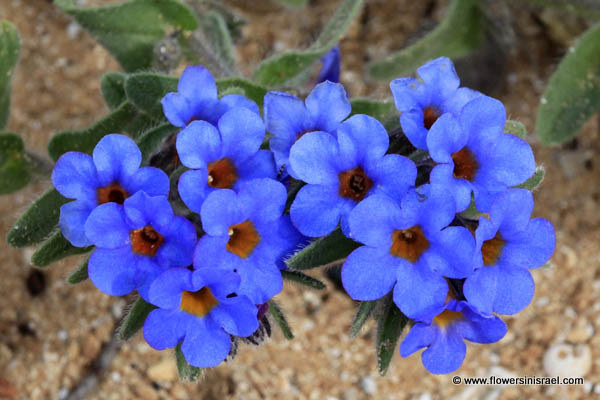
|
| Life form: | Chamaephyte, semi-shrub | |
| Stems: | Root dark red; stems 20-40 cm, prostrate bushy | |
| Leaves: | Alternate. rosette, entire | |
| Flowers: | Purple, dark blue, hermaphrodite | |
| Fruits / pods: | Schizocarps | |
| Flowering Period: | February, March, April | |
| Habitat: | Sand | |
| Distribution: | Mediterranean Woodlands and Shrublands, Semi-steppe shrublands | |
| Chorotype: | Mediterranean | |
| Summer shedding: | Perennating |
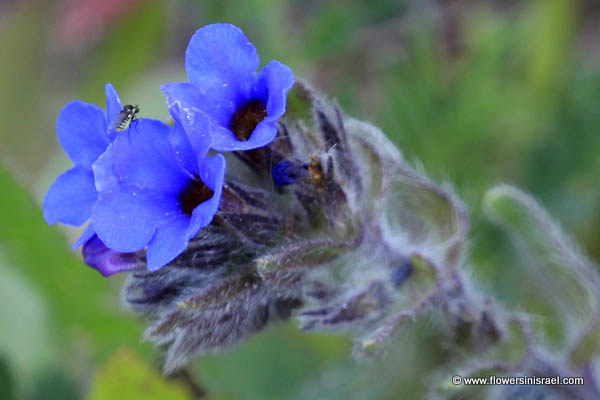
Derivation of the botanical name: Alkanna, Middle English alkanet, from Medieval Latin alchanna, from Arabic الحنّاء al-hinnā, al-ḥanna, the henna (Lawsonia inermis lythraceae). tinctoria, tinctus, "to wet; to dye"; ori, "capability, functionality or resulting action". Used in dyeing. The Hebrew word: אלקנה, Alkanna, transliteration from Medieval Latin, from Arabic.
Alkanna tinctoria is also known as orchanet, dyer's bugloss, Spanish bugloss or bugloss of Languedoc. Alkanna tinctoria naturally grows in maritime sands, on the shores of the the eastern part of the Mediterranean. It has a dark red root of blackish appearance externally but inside showing a blue-red meat, surrounding a whitish core, a traditional plant source of Alkannin, a red dye. A papyrus written in Greek, dating from about the third or fourth century CE, which was found at Thebes, mentions Alkanna tinctoria as a source of red dye. Ancient Egyptian textiles were dyed mainly in blue or in red, and less frequently yellow textiles were met with. The plants used as a source of blue colour were indigo (Indigofera species) or woad (Isatis tinctorum). Red colours were mainly from alkanet (Alkanna tinctoria) and henna (Lawsonia inermis). Yellow was mainly produced from pomegranate (Punica granatum) and safflower (Carthamus tinctorius). Alkannin is used by pharmacists as well as in perfumes and to stain wood or marble. It can make wood look like rosewood or mahogany. The dye is also used in thermometers and as a litmus to test for acids and alkalines. Alkannin is used in folk medicine where it is claimed to possess, among other properties, wound healing and anti-inflammatory activity. Alkannin is a pharmaceutical substance with a wide spectrum of biological properties. Perhaps the first recorded use of Alkanna tinctoria roots is found in the works of Hippocrates (c.460-c.377 BCE) who described their use for the treatment of ulcers. Theophrastus (c. 371 – c. 287 BCE), also mentioned their applicaton as dyes and medicines. Alexander the Great (356 –323 BCE) was known to have employed doctors trained in herbal medicine, and it thus seems likely that the medicinal properties of Alkanna tinctoria root were used to treat the sick and injured during his campaigns. Dioscorides (circa 40—90 CE), described the features in more detail in his De Materia Medica. 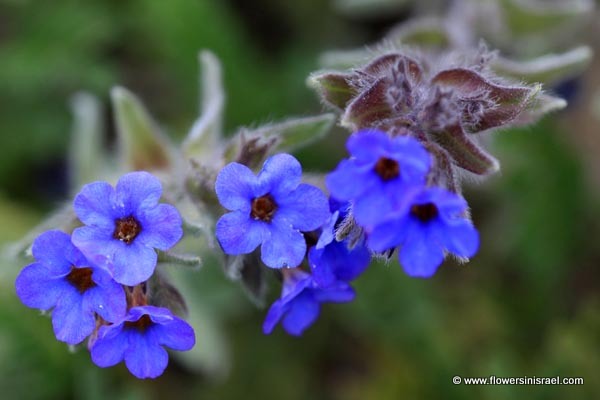
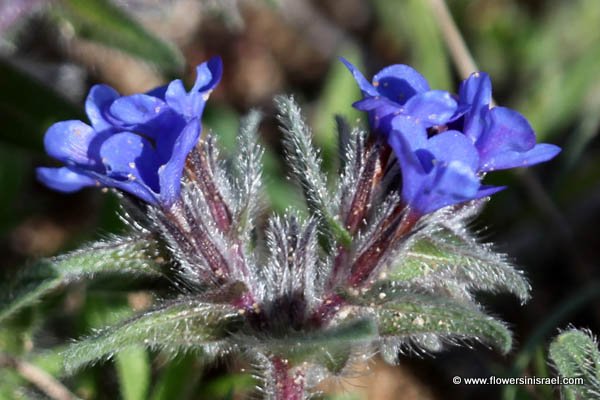
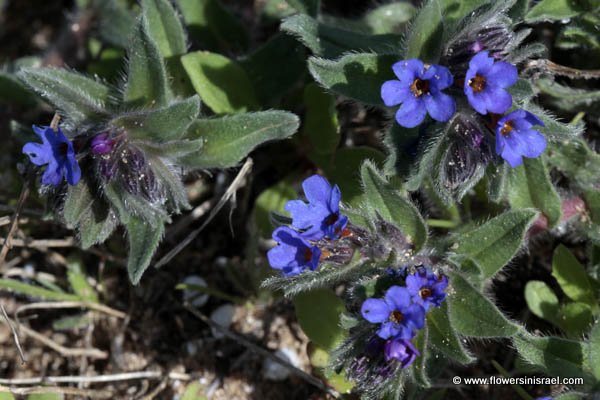
|